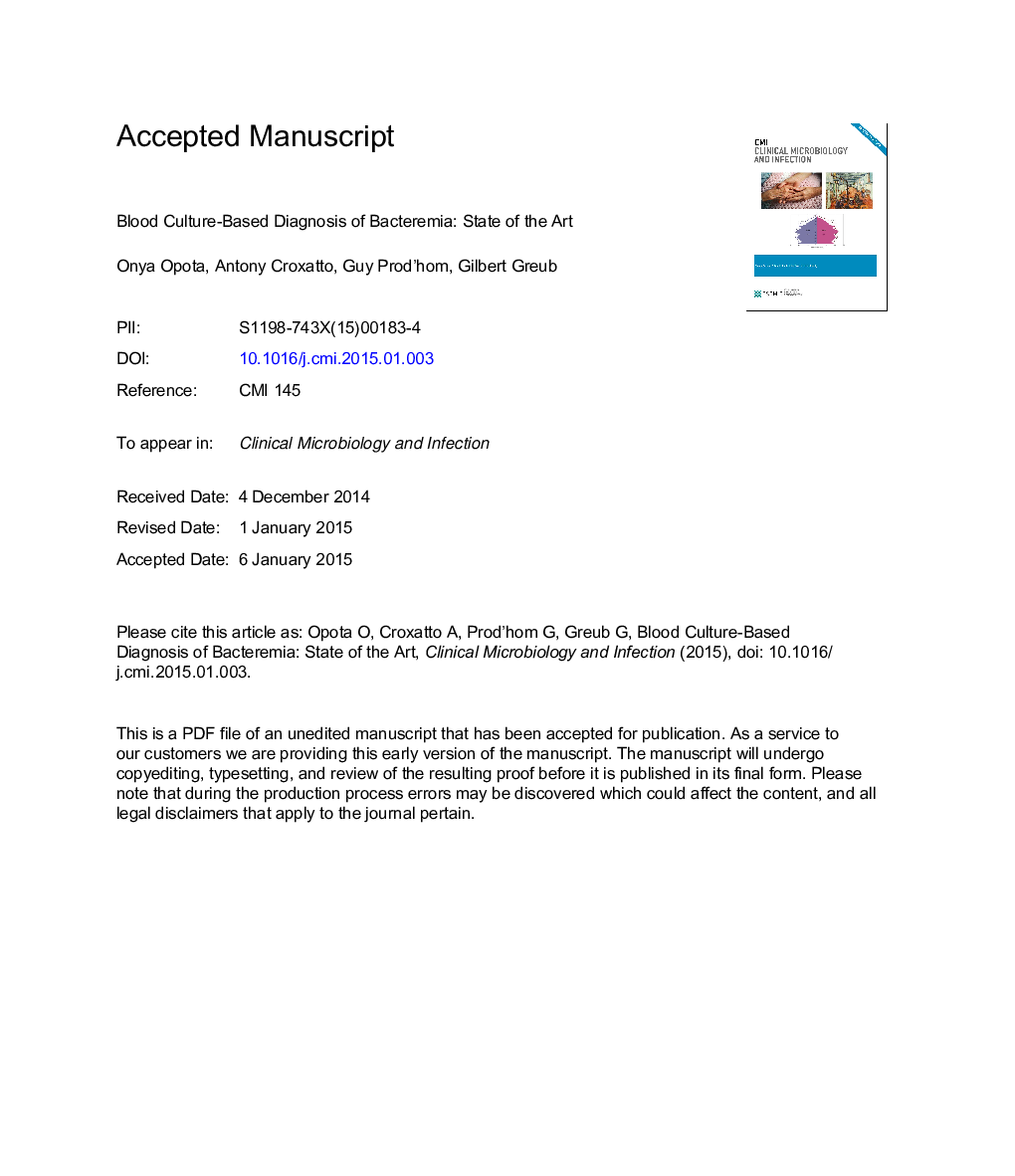| Article ID | Journal | Published Year | Pages | File Type |
|---|---|---|---|---|
| 6129463 | Clinical Microbiology and Infection | 2015 | 25 Pages |
Abstract
Blood culture remains the best approach to identify the incriminating microorganisms when a bloodstream infection is suspected, and to guarantee that the antimicrobial treatment is adequate. Major improvements have been made in the last years to increase the sensitivity and specificity and to reduce the time to identification of microorganisms recovered from blood cultures. Among other factors, the introduction in clinical microbiology laboratories of the matrix-assisted laser desorption ionization time-of-flight mass spectrometry technology revolutionized the identification of microorganisms whereas the introduction of nucleic-acid-based methods, such as DNA hybridization or rapid PCR-based test, significantly reduce the time to results. Together with traditional antimicrobial susceptibility testing, new rapid methods for the detection of resistance mechanisms respond to major epidemiological concerns such as methicillin-resistant Staphylococcus aureus, extended-spectrum β-lactamase or carbapenemases. This review presents and discusses the recent developments in microbial diagnosis of bloodstream infections based on blood cultures.
Related Topics
Life Sciences
Immunology and Microbiology
Microbiology
Authors
O. Opota, A. Croxatto, G. Prod'hom, G. Greub,
